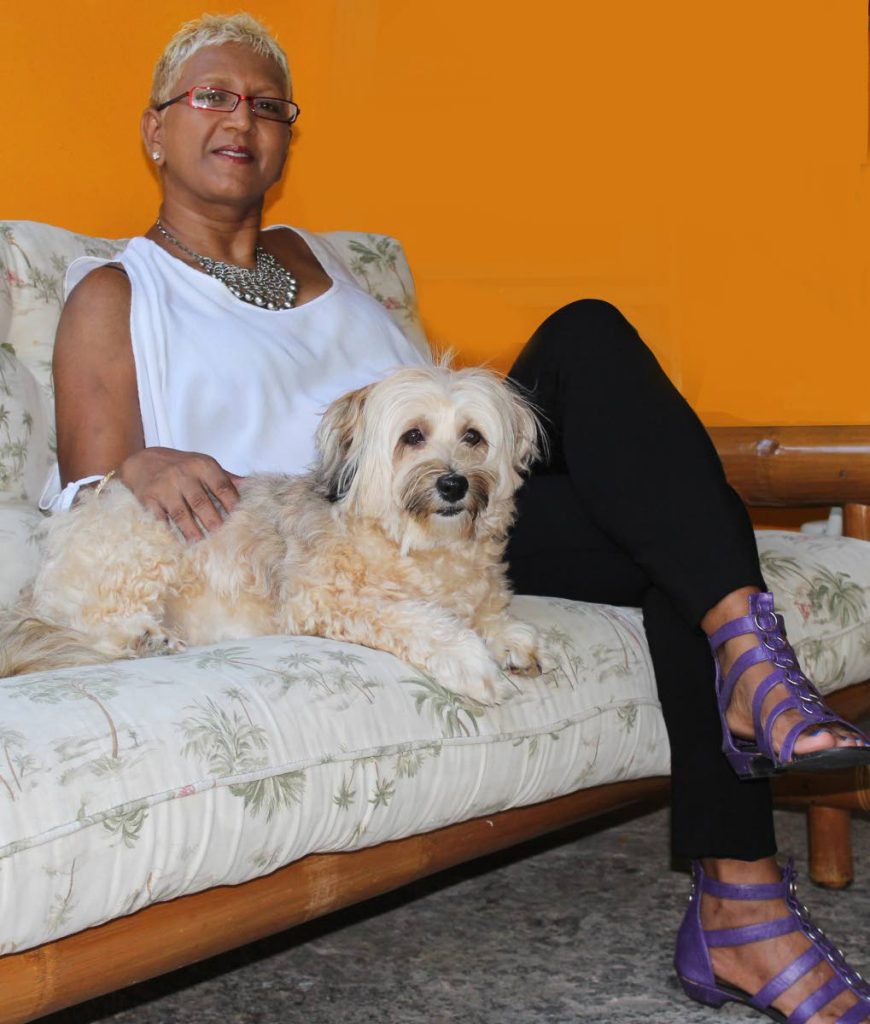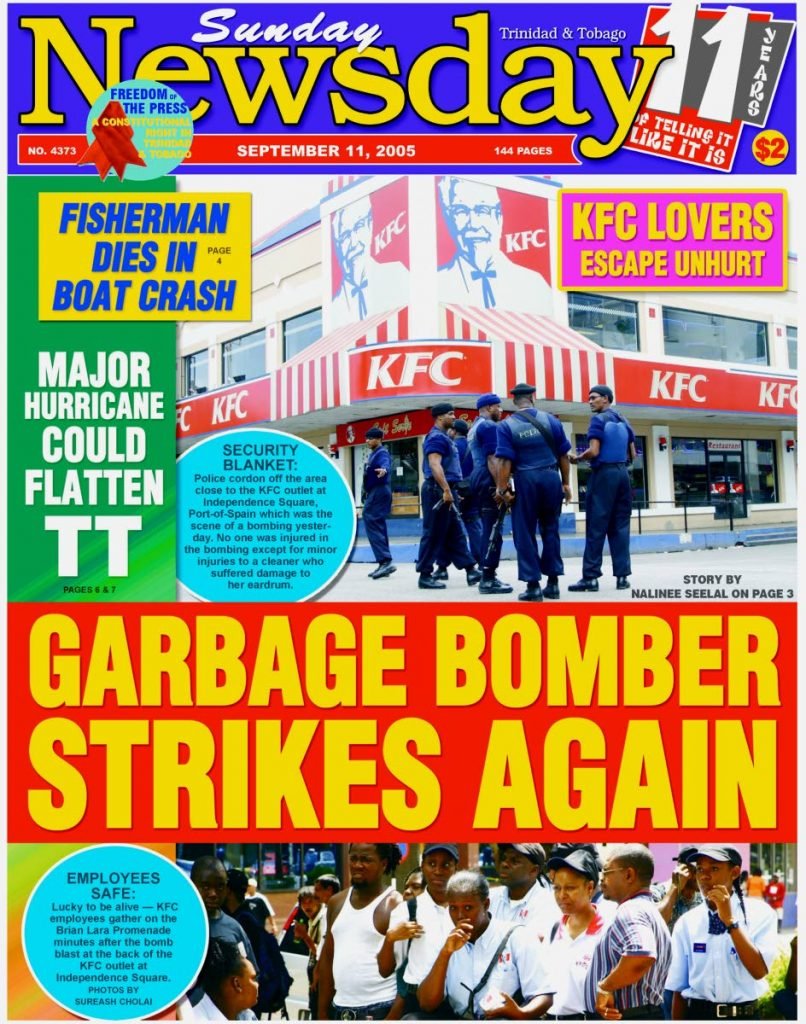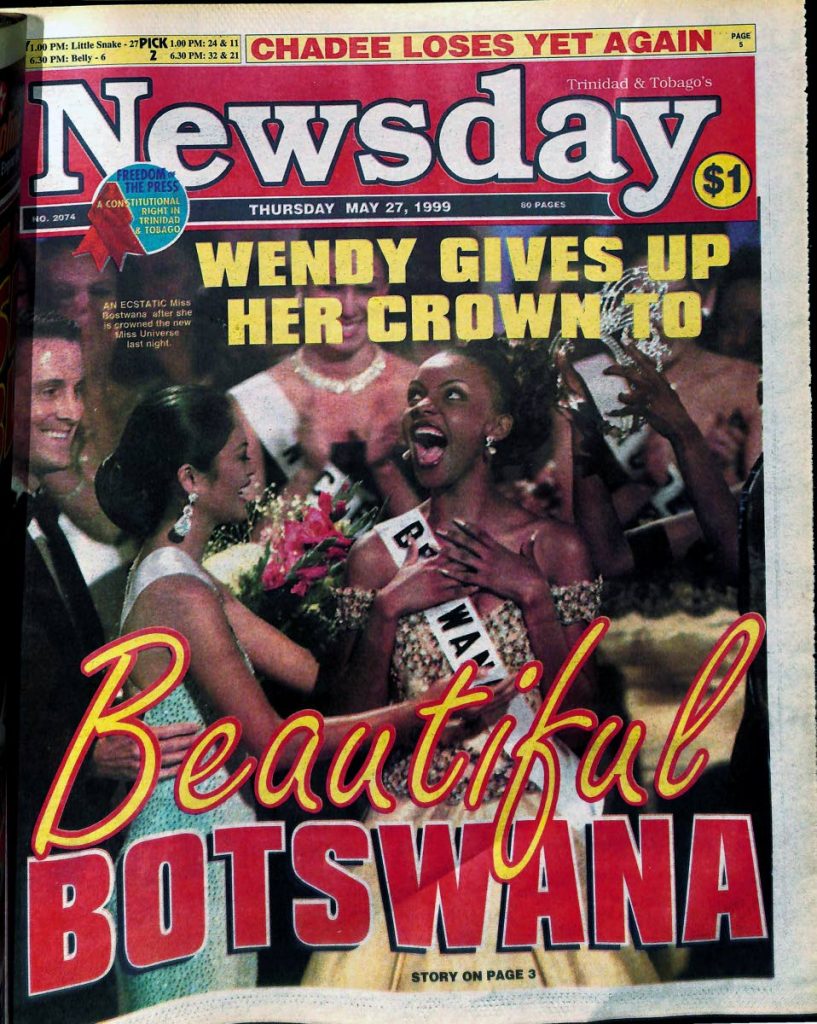Sheri Halal - Print innovation by design

KIERAN ANDREW KHAN
Sheri Halal started off in news media at just 17 at the Guardian newspaper as part of an OJT programme. That would lead to a stint of over ten years with one of the two major national newspapers at the time – well before Newsday existed.
A series of events, chance meetings and a major national qemergency however would result in her being instrumental to the design, aesthetic, look, feel and success of Newsday later on.
She and veteran journalist Therese Mills became close under some unexpected circumstances.
“During the 1990 coup, while I was still working with the Guardian, I offered Mrs Mills, the editor in chief there at that time, the option of me coming in the day after that coup to work.
“I would go on to spend the next five days there while the city was under siege – working, sleeping on a rug in the office, taking quick showers of sorts – simply to get the news out,” she recalled. During this time, as a paste-up artist for the newspaper, she would work closely with Mrs Mills and the small group of staff under intense conditions.
Two years after that, after having left the Guardian for a promotion at another paper, Halal received an unexpected call – to join Mrs Mills to work on a new national newspaper under her leadership – this time as chief subeditor.
“I knew right away that I wanted to do it. The opportunity to work with a woman that I looked up to – someone who got things done and had a very different way of doing things – was something that I couldn’t pass up.”
At that time, the notion of a third paper was a revolutionary one, with both the Guardian and Trinidad Express having established their presences and defined their markets many years earlier.
“We proceeded anyway. We were a small team at the start, a group of people who came together to try to create ‘the good news paper’; so much so that it was almost like a small family. If one person had to stay late to complete an aspect, we all stayed.
“And everyone had a say in the direction we were taking the paper. Mrs Mills would ask even the security guard of the building what he thought. It was more or less a family business,” she remembered.
But soon, the team realized that good news simply didn’t sell as well as they had hoped, so they began to dig a bit deeper.
“There was a demographic that no one seemed to cater for directly. The newspapers at the time had a language that was more upper-class, with markets to match. Front pages were full of text but we also wanted to reach people in the market that wanted to have an idea of the news without reading too much in-depth. And we started to think of covering things that no one else would at the time too,” Halal observed.
Out of that came several landmark decisions for which the Newsday became known. Primary among those was the decision to move to a more visual front page, using a prominent photo and a bold strong headline – and a shift to featuring wider cross-sections of the country’s population and the news that mattered to them.
Out of this, crime coverage became prominent alongside court matters, politics, entertainment and more.

“I’m the person that made that decision to design the front page differently – to make it visual, and to greet new readers with a bright, colourful and visual cover, with the support and encouragement of Mrs Mills.
“At the time, we also made the decision to put that focus on crime due to the number of sensational crimes happening at the time – which of course coincided with covers that were more intense for the time due to the visual approach.
“However, it wasn’t just about sales – it was about making crime the focus so that the government would also put the focus on it too. But when we presented it, people consumed it. The public liked it and sales took off too. We were talking about the things that people wanted to read – for better or worse.”
Halal said Newsday even created a different kind of social media ahead of its time.

“Back then we would cover as many events in one day as possible, so that we could present a pictorial spread of a number of events with as many people in each photo as possible.
“Given that there was no social media back then, this was a way of sharing and encouraging people who were in the paper that day to go buy it or buy it because their friends and family were in it – and it worked!”
The paper also stuck to the basic facts – the who, what, where, when and how.
“As cable news became popular, we also shortened our story formats as people were getting more news sources internationally – again leading the way in these types of decisions.”
In the industry, Halal said, “There is a general consensus that a newspaper takes three-five years to become profitable. We were able to make Newsday the number-one newspaper in the country in that timeframe instead.”

Halal recalled, “We pioneered innovations in print and introduced interactive games like Newsday Bingo.”
The other newspapers followed that lead, she believes, “to the point where, by 2008, it was difficult to discern a difference between what we led with and what they now do.”
But Newsday had other tricks up its sleeve.
“We won many awards along the way for our bold headlines with colour and covers like ‘Guilty Guilty Guilty’ following the Dole Chadee convictions.
“At the time,” she concluded, “this was absolutely new ground, and we are ultimately very proud of what we achieved.”


Comments
"Sheri Halal – Print innovation by design"